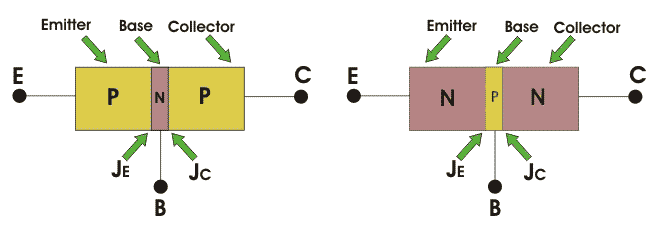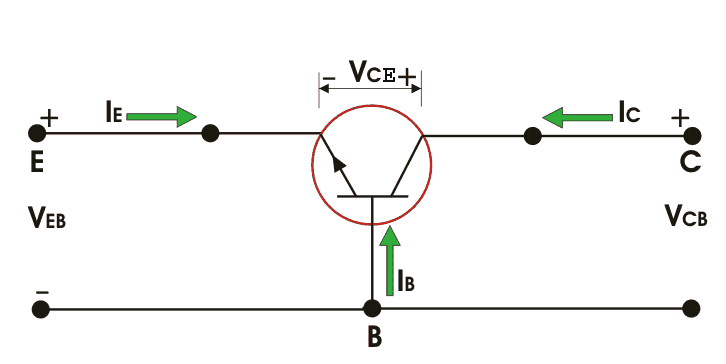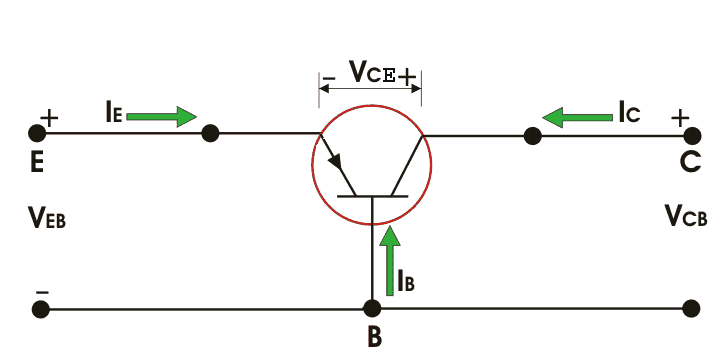Definition of BJT:
A Bipolar Junction Transistor is a three terminal semiconductor device consisting of two p-n junctions which is able to amplify or “magnify” a signal. It is a current controlled device. The three terminals of the BJT are the base, the collector and the emitter.
A signal of small amplitude if applied to the base is available in the amplified form at the collector of the transistor. This is the amplification provided by the BJT. Note that it does require an external source of DC power supply to carry out the amplification process. The basic diagrams of the two types of bipolar junction transistors mentioned above are given below.

From the above figure, we can see that every BJT has three parts named emitter, base and collector. JE and JC represent junction of emitter and junction of collector respectively. Now initially it is sufficient for us to know that emitter based junction is forward biased and collector-base junctions is reverse biased. The next topic will describe the two types of this transistors.
N-P-N Bipolar Junction Transistor:
As started before in n-p-n bipolar transistor one p – type semiconductor resides between two n-type semiconductors the diagram below a n-p-n transistor is shown-

Now IE, IC is emitter current and collect current respectively and VEB and VCB are emitter-base voltage and collector base voltage respectively. According to convention if for the emitter, base and collector current IE, IB and IC current goes into the transistor the sign of the current is taken as positive and if current goes out from the transistor then the sign is taken as negative. We can tabulate the different currents and voltages inside the n-p-n transistor.
P-N-P Bipolar Junction Transistor:
Similarly for p – n – p bipolar junction transistor a n-type semiconductors is sandwiched between two p-type semiconductors. The diagram of a p – n – p transistor is shown below

For p-n-p transistors, current enters into the transistor through the emitter terminal. Like any bipolar junction transistor, the emitter-base junction is forward biased and the collector-base junction is reverse biased. We can tabulate the emitter, base and collector current, as well as the emitter-base, collector base and collector-emitter voltage for p-n-p transistors also.
